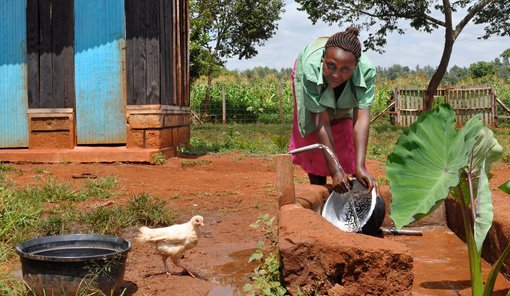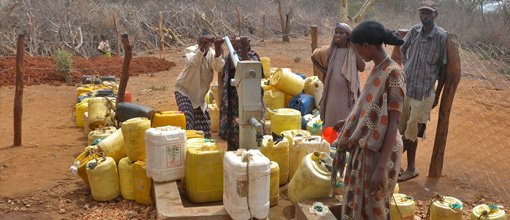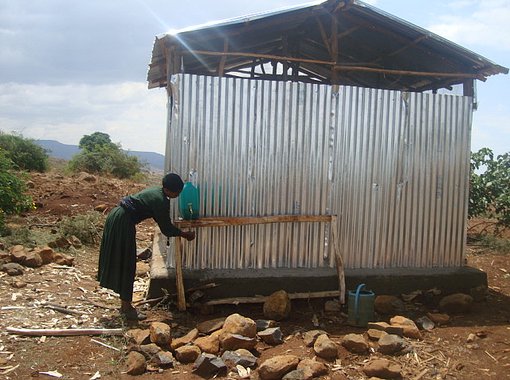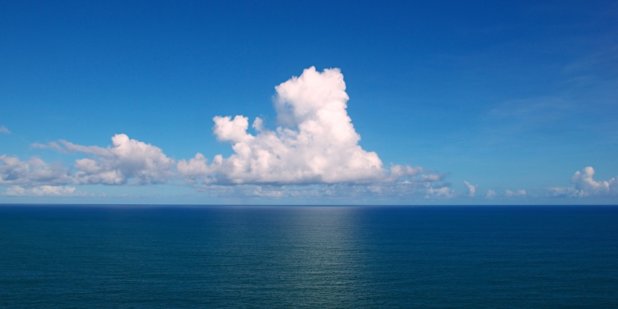- About
- Topics
- Story
- In-Depth
- Picks
- Opinion
- News
- Donate
- Signup for our newsletterOur Editors' Best Picks.Send
Read, Debate: Engage.
Deaths from water related conflicts in Kenya have risen from 200 yearly in 2009 to 1200 according to data from police and security agencies, with conflict areas expanding in a damning revelation that places water as the next oil as supply dwindle.
Kenya is not new to water wars. But they have been concentrated in the dry North Eastern area which is predominantly occupied by pastoralists. Water conflict in these areas is as old as the resource itself.
Years of failed rains have meant that pastoralists have to walk long distances in search of water and pasture for their livestock with the Pokot, Samburu and Turkana tribes, all pastoralists chasing the same scanty resource. This has birthed an inveterate rivalry and deaths have become a normal occurrence. Children as young as ten are taught how to use guns; to defend themselves and defend the little water they find from the enemy. The wars have crossed borders as pastoralists desperate for water cross to neighbouring Uganda and Ethiopia.

But climate change which has affected the amount of rainfall the country receives is now fanning water wars across the country with even the government admitting that the scale of water related woes like crimes, and deaths is spiraling out of control. Experts now say a new but catastrophic trend is emerging with more water related conflict incidents being recorded in slums and in recently introduced county governments.
According to security companies’ and Kenya police records, at least one hundred incidences are being recorded daily across the country. “Forget about the petty fights over one neighbour hood having water and the other going days without water. We are talking about murders, thefts and muggings. It has become so desperate to an extent of now having policemen man certain waterpoints where the conflicts happen,” said Muli Kathoki a retired police officer working as a consultant on conflict resolution.
Beryl Nyamweya a mother of three turned widow knows the scale and results of water conflict in the city. Living in Kibera, Nairobi’s largest slum which houses over 200,000 people, she lost his husband who was the family’s breadwinner, in a conflict over water which turned tragic. With uncoordinated structures and neglect by the government, both county and national, residents of the slum are left to search for water on their own.
Desperate, they employ all tactics to have at least a jelican for the day. Scenes of theft and illegal disconnections of water pipes by young unemployed youth who later sell to locals, are an everyday occurrence. It is usually survival for the fittest as the slum dwellers scramble for the precious commodity. Such is how the late Lazarus Nyamweya, husband to Beryl met his death.

“The young boys brought a long pipe and signaled us to go buy. Everyone was running all over. We had stayed for a week with no water at all. My babies were weak, sick and emaciated. My husband couldn’t wait. He picked the jelicans and run to the water source,” recalled Beryl pensively. But by the time Lazarus was getting to where the water was being a long queue had already formed snaking its way across the shanties. “He knew he could loose his kids anytime. He was ready to do anything to just get a few drops,” Beryl said amid sobs. Impatient of the line that didn’t seem to move, Nyamweya decided to jump the long queue and placed his jelican where the piped water was.
A confrontation ensued and in the melee a group of young men started shouting at him forcing him on the ground and stabbing him endlessly. “I heard screams, then I saw people running in all directions, women wailing and calling my husbands name,” she said. She spotted her husband’s green shirt which was on the ground. Confused she ran to confirm what was happening. “And there lay my husband, immobile, lifeless, but with the yellow jelican clutched to his hand with the last two drops coming from the jelican. An image I carry in my mind to date,” recalled Beryl.
While cases of stabbing are not very common, police say fights, and theft of water in the slum is becoming serious every day. Last month for example the police incident report indicated that 70 water related cases were reported daily. It also emerged that young men were jumping to the neighbouring Lang’ata and Highrise estates that houses an increasingly middle class and stealing water which they sell to the slum dwellers.
It has become a very well coordinated system with a water cartel that determines who gets water when. But the newly devolved county governments are equally feeling the heat as different counties scramble for major water catchment areas. Traditionally Kenya had a national government and resources were shared among the citizens. But county governments, keen on securing key resources with the aim of enticing investors are demarcating boundaries which are fanning inter county squabbles. This is especially on water towers as most of the people in the counties are farmers.

Demand for water by livestock and for irrigation means even the water towers are struggling to meet the growing demand. Mau Forest, one of the five water towers located in Kenya’s Rift Valley and the largest in Kenya, has been at the source of fervent conflicts between Narok and Bomet counties which have escalated to physical fights with each county laying claim to the forest. The forest has some of the highest rainfall rates in Kenya with many rivers originating from the forest. But human encroachment including diverting water flow to individual farms has taken a toll on lakes which are receding, sparking the heated conflicts. “
And there is no let up in these wars. The weather men are telling us to brace ourselves for even more depressed rains in coming years. With population growth on a meteoric rise the country is headed for a major catastrophe if it doesn’t put in place clear guidelines of managing and sharing the limited water we have. These conflicts by the look of things will be bloodier than the traditional tribal clashes,” said Muli.
